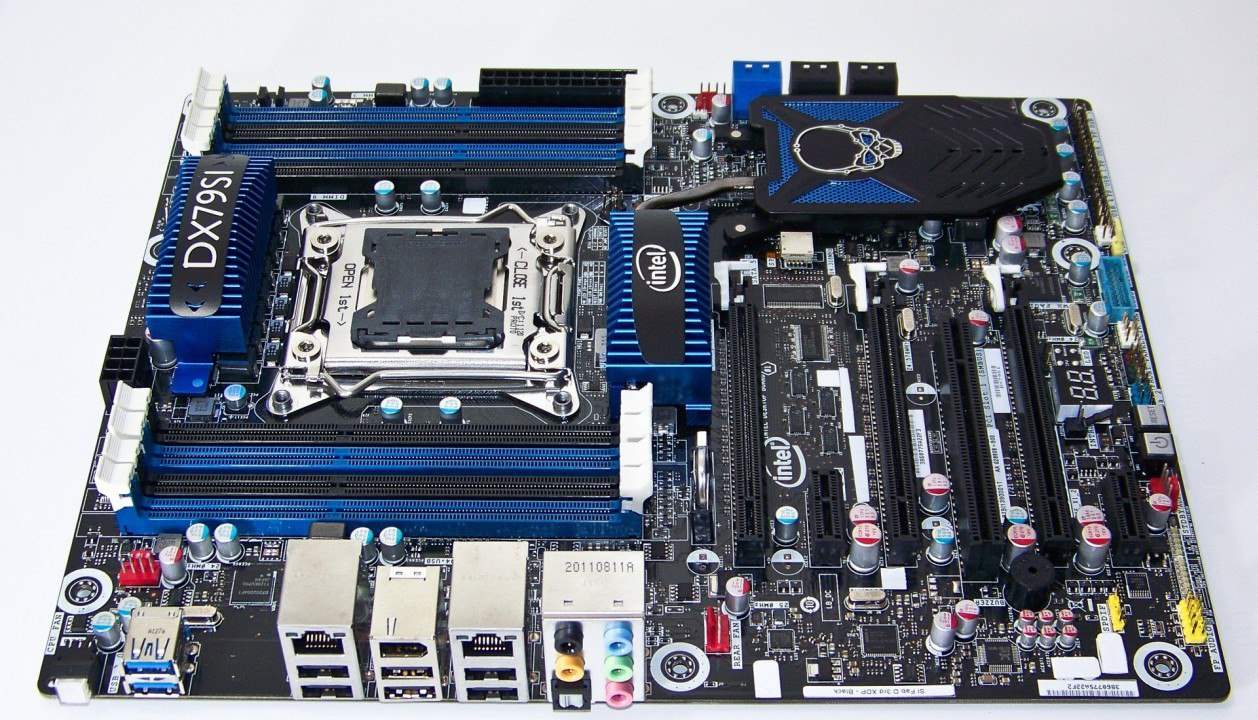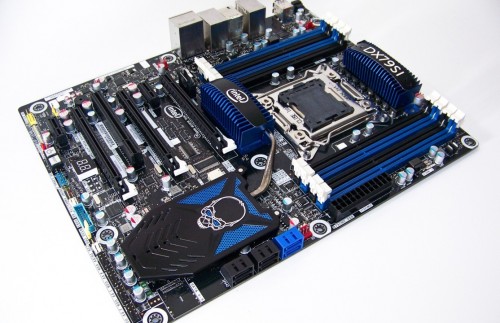When was the last time that you went out and bought an INTEL desktop board for your next DIY build? I’m willing to bet that most of you would say rare to never. It’s not that their desktop boards weren’t good, but compared to the innovations, features and variety provided by all the great companies in the market like ASUS, GIGABYTE, MSI and many more, it’s hard to imagine why you’d need to seek out comparatively “plain” options.
While most enthusiasts aren’t really “enthused” by INTEL’s desktop offerings, the company was instrumental in leading the way to creating the form factors and standards that are the foundation of the desktop motherboard today. As industry standard boards, they found their way into many desktop machines for corporations that were looking for a solid industry standard solution, but as these standards started to take hold, it was clear that the market no longer needed this leadership. In fact, the market they nurtured left the nest ages ago and is already doing some amazing things that we’re all enjoying today. So that’s why earlier this week, INTEL announced that they were winding down their entire desktop motherboard division within a three year period.
What Happens Now?
After INTEL’s latest 4th generation Core products (Haswell) launch later this year, you’ll never see a new desktop board from them again. All current warranty/service commitments will be carried out and that will pretty much be it for any INTEL produced motherboards and that little glowing skull that used to inhabit their “Extreme” series of boards that were built for enthusiasts. But we’ll continue to see the company’s influence in new form factors and products that will continue to ignite the imagination of DIY and enthusiasts. As INTEL’s Daniel Snyder put it…
“The internal talent and experience of twenty years in the boards business (which until recently has been largely focused on desktop tower type designs) is being redistributed to address emerging new form factors — desktop and mobile – and to expand Intel’s Form Factor Reference Design (FFRD) work and enable our partners to develop exciting new computing solutions.”
These solutions include investment into things like the INTEL NUC (Next Unit of Computing) form factor, which provides powerful DIY form factors in the palm of your hands, or the push for innovative all in one DIY solutions like the one we saw at the GIGABYTE Suite at CES 2013 with thin form factor. The ability to roll your own all in one system complete with a touch panel is just one of the the things that personally excites me and I’m happy to see that the DIY spirit isn’t leaving INTEL any time soon. Who wouldn’t want to roll their own “iMac Killer” hackintosh or Dell XPS One and make it completely overkill in true DIY enthusiast spirit?
But most importantly, INTEL needs to put their energy into pushing the form factors that will drive innovation, which is mainly coming from not just ultrabooks, but other portable computing devices like tablets and smartphones. Although I can’t ever see a DIY ultrabook, I can see them becoming even thinner and lighter and packing even more performance than ever thought possible, with amazing battery life.
Plugging the Hole…
In reality, the market has had amazing support from all the brands you know and love for quite some time now and the hole that INTEL leaves behind really won’t be hard to fill. In fact, two of the largest companies in the desktop motherboard space issued statements on INTEL’s departure. ASUS’ own J.J. Guerrero, Senior Technical Marketing Specialist, had this to say…
“Enthusiasts and PC builders trust ASUS as their go-to brand when it comes to building desktops. As the global leader in motherboard design across multiple product ranges, ASUS remains strongly committed to developing a wide range of new and innovative motherboards now and well into the future. For the consumer segment we have invested significant resources to grow and sustain the Build Your Own ecosystem, including the PCDIY initiative designed to educate and inspire new builders, our ongoing support for the PC gaming community, and our grassroots program for university students across North America providing support for learning through a number of vehicles. For the commercial segment we have been on the forefront with the highly acclaimed Corporate Stable Model (CSM) program in North America. ASUS motherboards have been recognized by eChannelNews with their Resellers Choice Award for Best Motherboard several years in the row. ASUS CSM motherboards covers a full range of chipsets and form factors, and come complete with a guaranteed long shelf life, advance cross shipping, and Intel vPro Technology. With the Haswell-based 4th generation Core platform we plan to deepen our commitment to bring excitement and new opportunities to the desktop platform.
ASUS will continue to expand our close partnership with Intel to fully support their growing CPU and chipset roadmap with a wide selection of motherboards that provide the highest quality and ownership value in the market. We have the utmost confidence in Intel’s continued commitment to desktop CPUs and chipsets, and eagerly look forward to leading the next generation of Build Your Own enthusiasts and system builders.”
GIGABYTE’s Tim Handley, Deputy Director of Global Marketing, also reaffirmed that they too were up to the challenge of continuing to drive the market that INTEL helped develop, and the new form factors to follow…
“While over the years Intel motherboards have been a competitor, they have also been a important partner in that they have opened up future markets for GIGABYTE to sell desktop motherboards into. For example the market for corporate systems using Intel’s now popular VPro technologies – there was initially very little demand for these platforms, but now after Intel motherboards created the market, GIGABYTE now offers a number of models because volumes are significant enough to warrant their own segment within our product portfolio. We expect the market for Thin Mini-ITX mobos to be another example of this later in 2013. So we’re a little sad to see them go. However, we understand that this highly competent team at Intel will continue to drive new market segments with form factor reference designs such as the tiny NUC that we saw at CES this year.
We plan to do all we can to make this transition as smooth and painless as possible by working with our channel partners and friends at Intel to provide sufficient consumer, corporate (VPro) and power user motherboards to markets where Intel motherboards enjoy strong demand. GIGABYTE Ultra Durable motherboards are an excellent substitute for Intel branded motherboards, and we offer a full range of models from the ATX form factor down to the Thin Mini-ITX form factor for AIO systems.”
Both companies have reaffirmed that the corporate and enterprise market will be well taken care of as both ASUS and GIGABYTE offer “Stable Model” programs that ensure that corporations have stable supply of standard platforms. But we are also seeing a bit of a divergence in direction with these statements with GIGABYTE taking a somewhat differentiated approach, pledging more support for those new form factors they showed off at CES 2013, while ASUS confirms support for the traditional enthusiast and DIY markets. Or I might be reading too much into this?!
At any rate, INTEL’s departure is no big deal to the traditional desktop market and its clear that all the current players will be able to fill any and all needs in the interim and in the future. But what I’m most excited about is what comes next as INTEL continues to push the envelope of what DIY can do with new and innovative form factors and platforms.
So maybe those rumours about INTEL soldering their CPUs to their sockets have some validity after all. It might just depend on the form factor, but it’s also pretty certain that your traditional desktop board won’t be part of that wave of “socket soldering innovation” any time soon. Thank goodness for that!
What are your thoughts on INTEL’s departure from the desktop motherboard market? Are you sad? Glad? Or plain indifferent. Leave us a comment!


